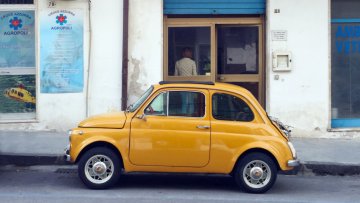Public transportation in Buenos Aires is very good, and the city itself is designed in an easy-to-navigate grid system, with an avenue every four blocks. From the airport, you can take a prepaid taxi service (remise), regular cab, bus or minibus - approximately 45-minutes to downtown.
Driving is aggressive and speed limits, signs and signals are not respected. Public transportation is your best bet, but car rentals are available through the major international agencies.
Bike lanes known as ciclovías or bicisendas are a recent addition with a projected 155 km of paths throughout the city by the end of 2015 (See Map). It is also possible to cycle through the flat city streets as long as you keep an eye on traffic, maintaining your distance from buses and taxis. Or, try riding between the rush hours of 11 am and 4 pm, and the streets are virtually empty on Sundays. A bike sharing program called EcoBici is available with dozens of 24-hr, automatic stations throughout the city. The service is free to residents and tourists once registered on the EcoBici website.
The metro, known as the Subte (short for Subterraneo) is the oldest metro in Latin America (opened in 1913) and runs a small and convenient network with connections to most of the city's tourist attractions. Most trains only run from 5 am to 10 pm and are accessed with a magnetic card - best to buy multiple rides to avoid waiting in line. Note it can get hot and crowded during rush hour. Ride Line A for a view into the metro's past - with tiled stations and vintage wooden trams.
There are over 100 bus lines that travel all over the city, with stops every two blocks. Buy a Guia T, sold at any newsstand and study the grids and matching bus routes. Most run 24 hours. Out of town buses leave from the Retiro bus station with frequent departures to almost anywhere in Argentina. Reservations are not needed except during peak times.
There are plenty of taxis. Make sure you take only the licensed black and yellow ones, which run on meters and means you may want to have an idea where you are going to avoid the scenic route. Drivers will not expect a tip, but it is customary to round up on the fare and leave the small change. Remises also offer taxi service but look like regular cars and are sent out by a company, therefore considered more secure. These operated on fixed rates.
